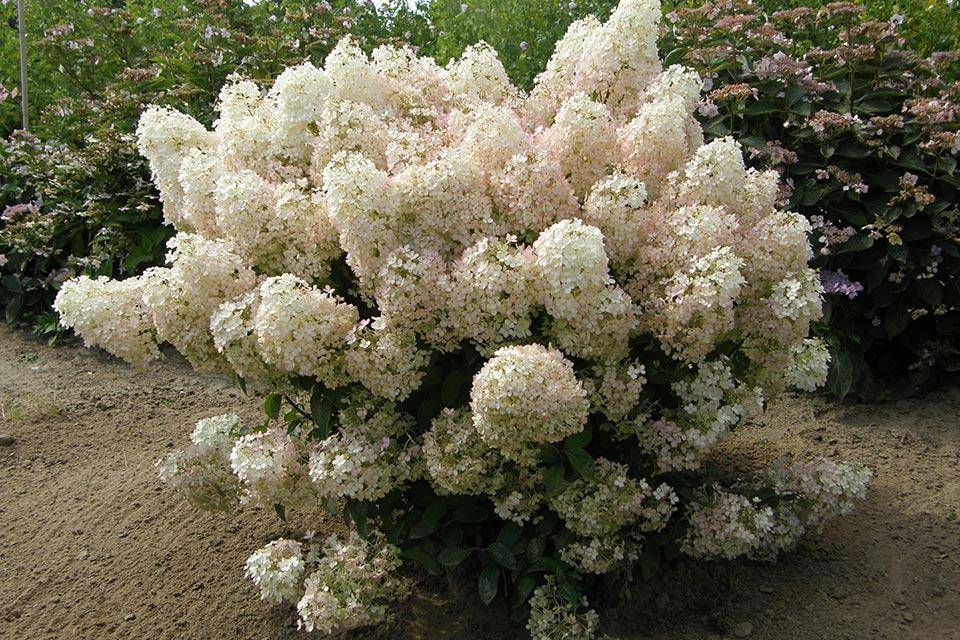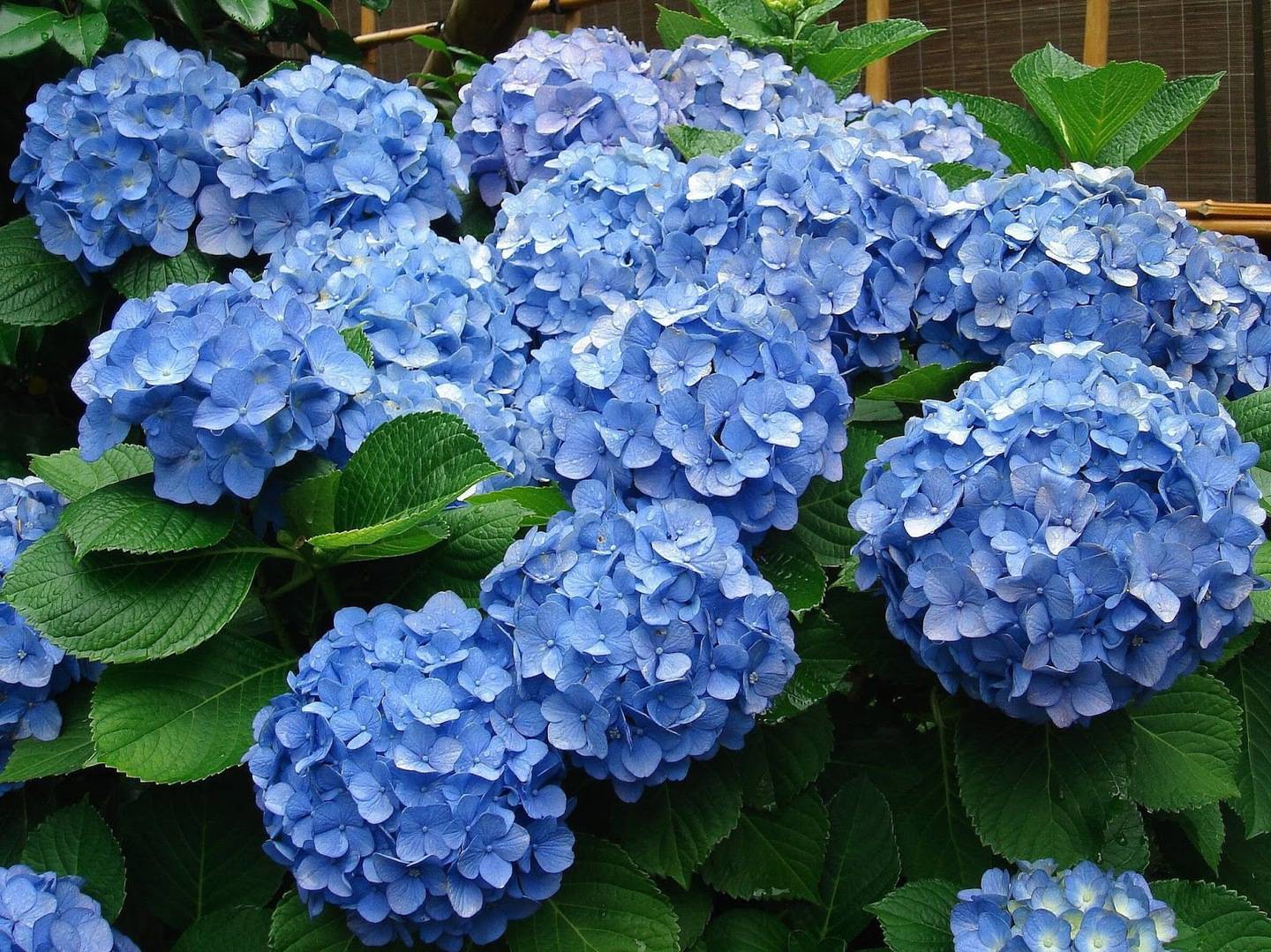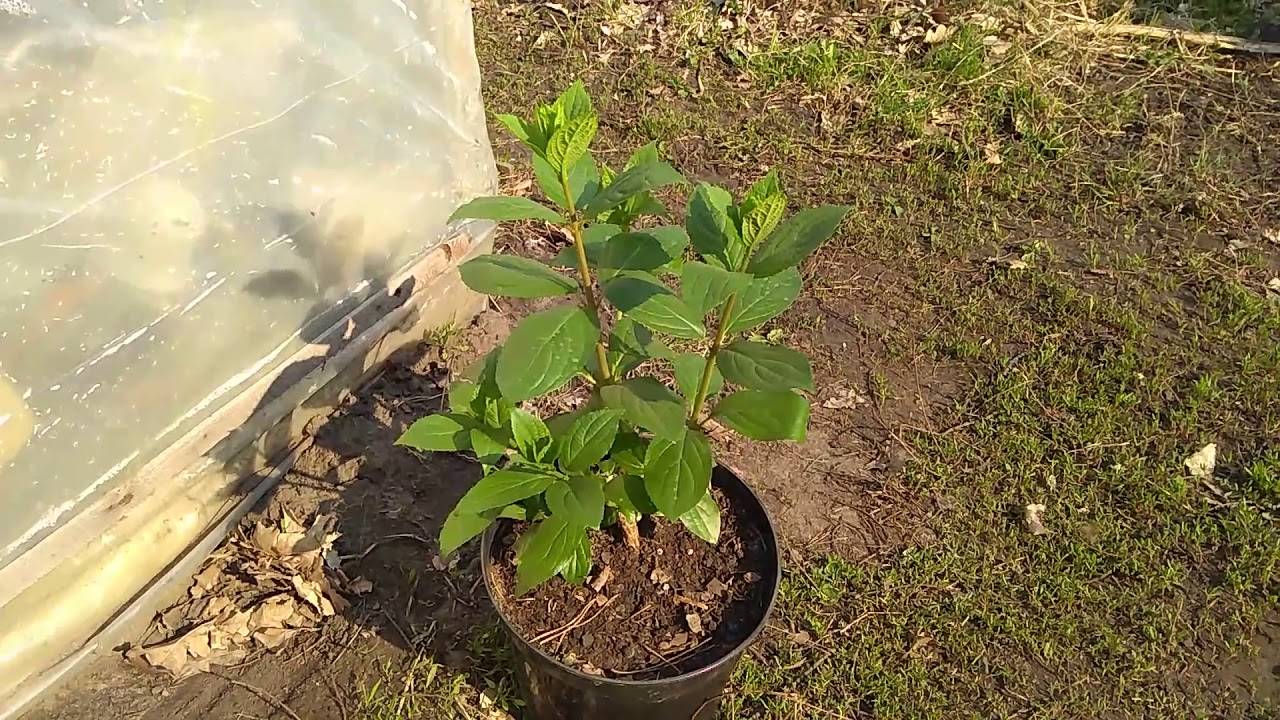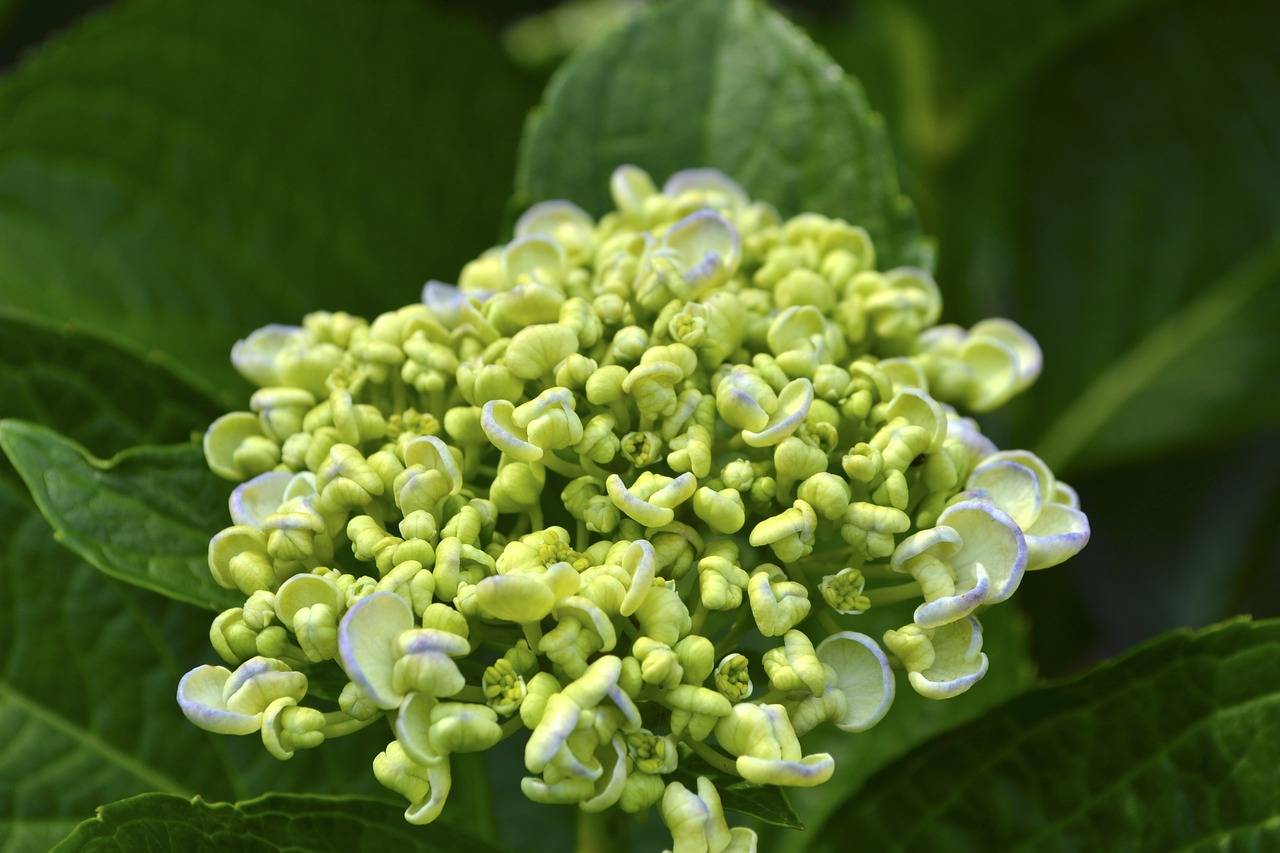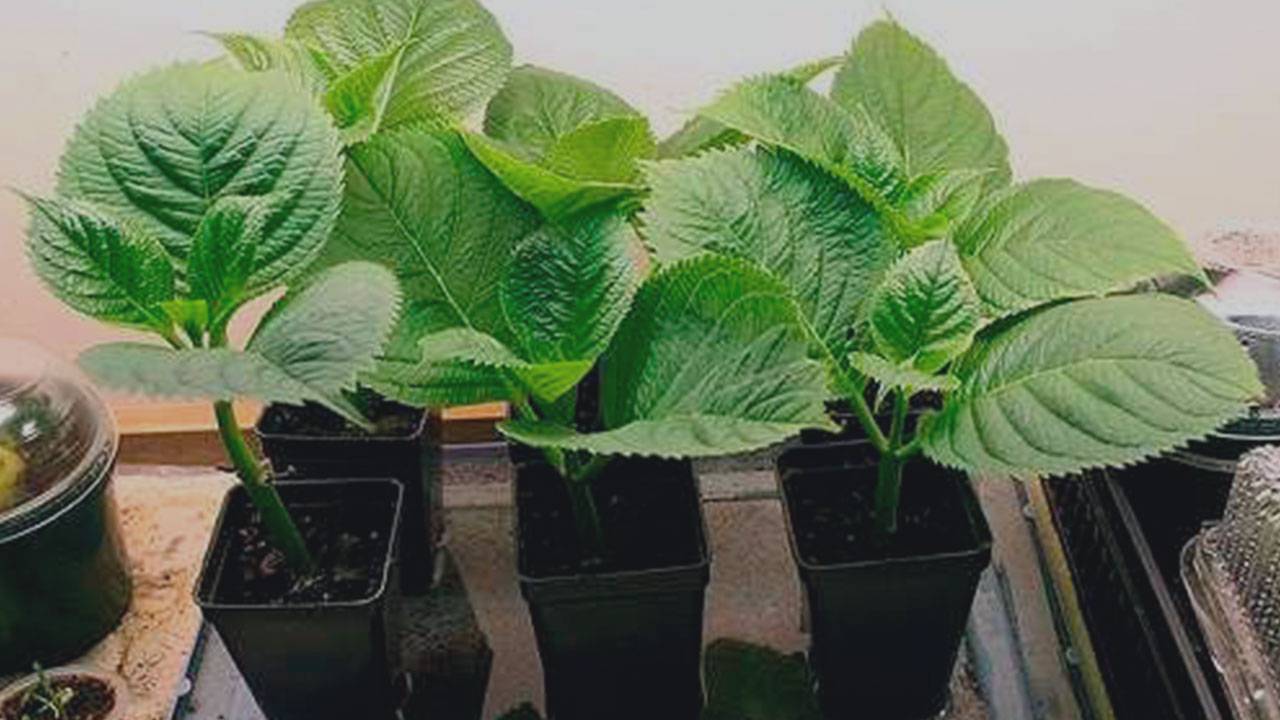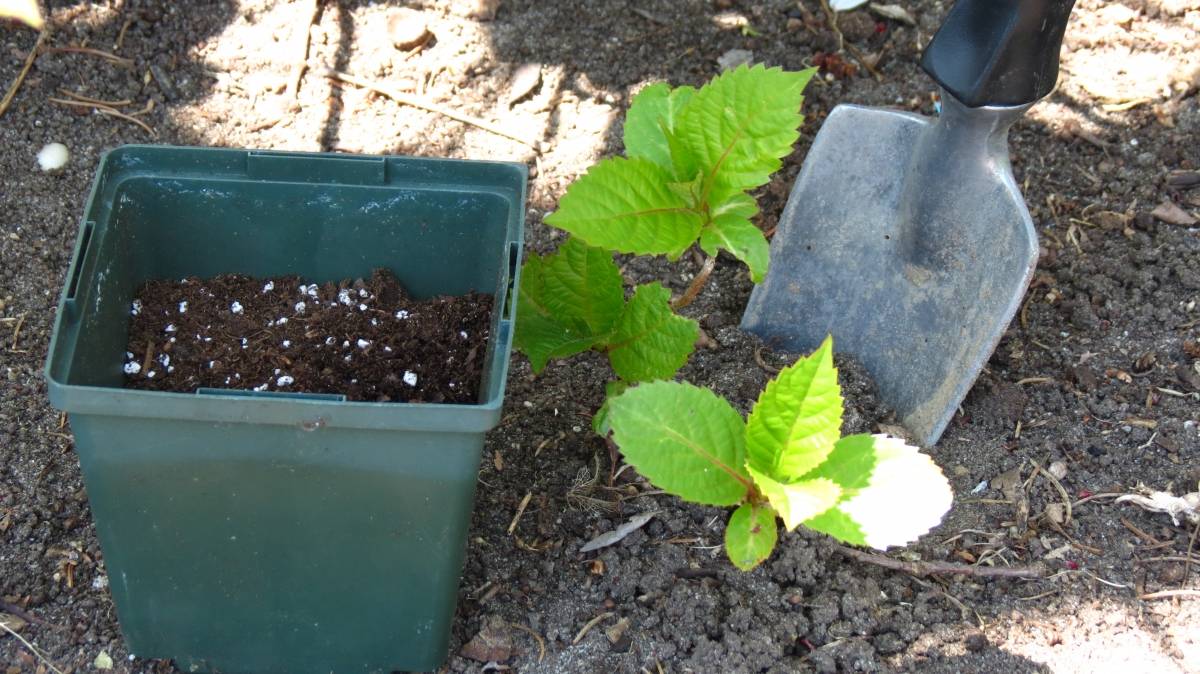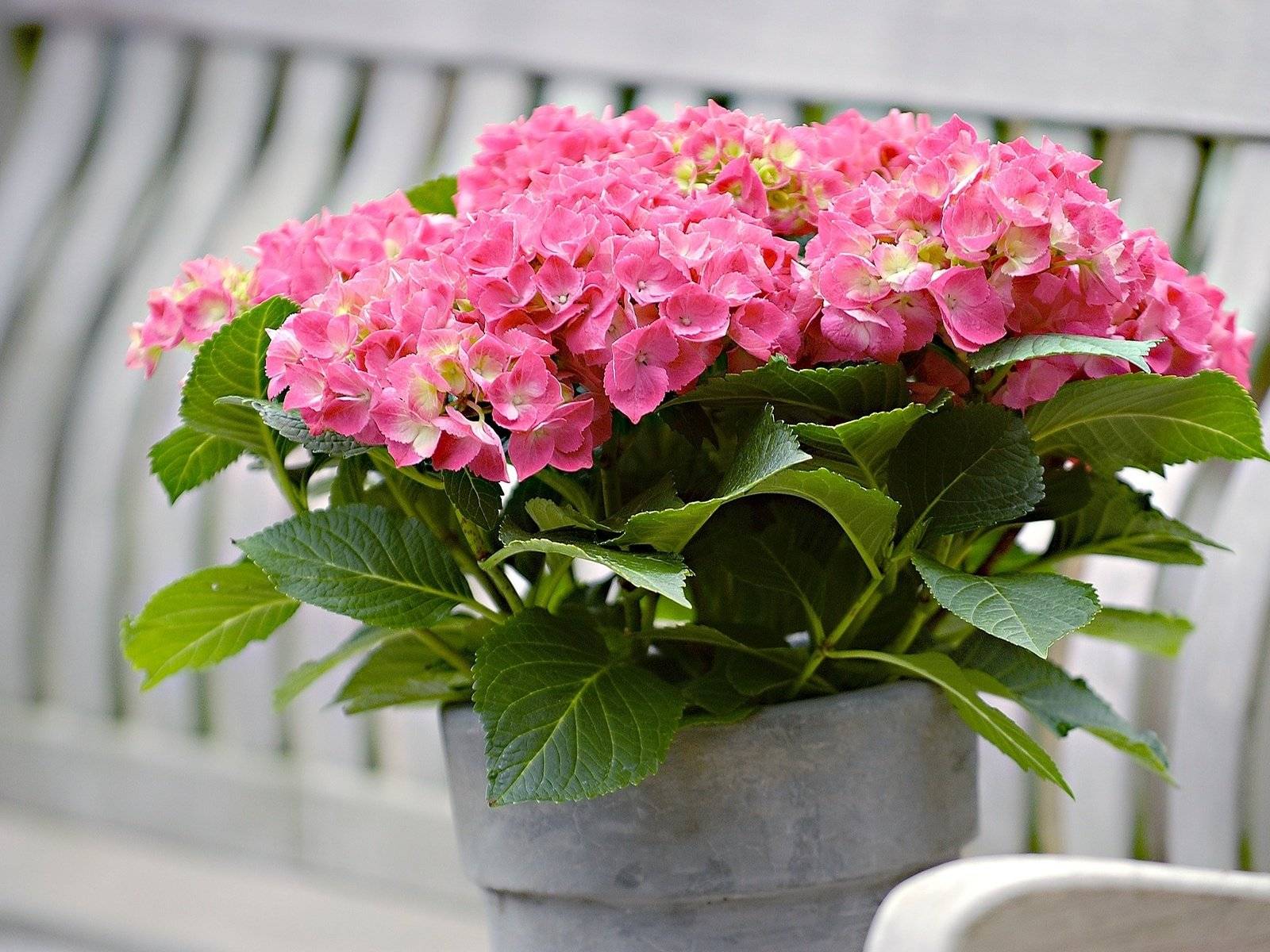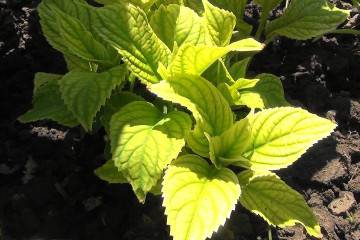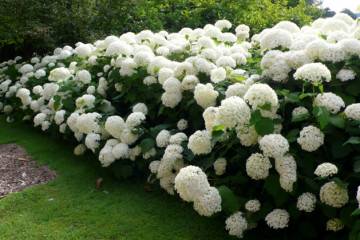Hydrangea soil - how to acidify hydrangea soil
Content:
- What soil does hydrangea like
- How to plant panicle hydrangea in spring
- Planting pit size for panicle hydrangea
- Distance between panicle hydrangeas when planting
- How to water hydrangea
- How often to water hydrangea
- How to feed hydrangea in June
- Does hydrangea like dung
- What peat is needed for hydrangea
- Is it possible to fertilize hydrangea with ash
- Watering hydrangeas with potassium permanganate
- Succinic acid for panicle hydrangea
- How to plant panicle hydrangea with seeds from China at home
- Soil for room hydrangea
A beautiful large-leaved garden plant, hydrangea is also grown in greenhouses and even at home. For this, it is important to know what conditions she prefers, as well as the composition of the soil.
What soil does hydrangea like
For the full growth of the bush, a very loose soil that is well permeable to air and moisture is required. This is a prerequisite for the onset of lush flowering. After each watering, the soil is thoroughly loosened or thoroughly mulched to simplify daily maintenance.
Surprisingly, the shade of hydrangea flowers depends on its variety, soil pH and its chemical composition. At pH <5, the shade of the petals is blue, if pH = 5.0-6.5, then the flowers will turn beige, and in an alkaline soil with pH> 6.5, the inflorescences will become pink or even purple. If the soil in the garden bed is neutral, then a fairly common phenomenon is hydrangea, which begins to bloom with blue and then pink flowers. The gardener gets the opportunity to adjust the shades of the hydrangea he likes to his taste.
Suitable soil for hydrangea
The color of the petals of a hydrangea is an accurate indicator of the composition of the soil in which it grows. To acquire a blue color of flowers, active assimilation of aluminum by the root system is required. This only happens in acidic soil. If the soil is sour, but you also want to get a pink color, then lime, dolomite flour, chalk are introduced into the ground in the second half of March.
Sometimes, even in acidic soil, it is not possible to get blue flowers. This is due to the lack of aluminum in the soil, with a simultaneous excess of phosphorus, which interferes with its assimilation. There are many ways to make the soil acidic for hydrangeas.
How to acidify hydrangea soil
As the shrub grows in the garden, the soil around it may change its acidity. This is especially affected by frequent rains, watering and fertilization. If at first the bush bloomed blue, and then turned pink, then this indicates that it is necessary to acidify the earth as soon as possible.
It is possible to increase the acidity by a simple and affordable method - mulch the planting with sawdust, coniferous litter, peat, as well as the introduction of sulfur or aluminum sulfate. The sulfur application rate depends on the chemical composition of the soil. To reduce the acidity of the sandy soil, only 60 g of sulfur are added per 1 m², for clay the norm is 2 times more - 160 g per 1 m².
Hydrangea citric acid proportions
Citric acid is a cheap and affordable soil acidifier. Watering is carried out 1-2 times a month, using the rate: 1.5-2 tbsp.tablespoons of powder per 10 liters of water.
How to feed your hydrangea with vinegar
For these purposes, ordinary food (table) vinegar with a concentration of 9% is suitable. Dissolve 100 g of vinegar in 10 l of water. The solution is then immediately poured into the soil around the trunk of the bush.
How to plant panicle hydrangea in spring
In the northern regions, the shrub is usually planted only in spring. In the southern regions, autumn planting is also used. Previously, the roots of the seedlings are shortened a little, and with them the annual branches, leaving a maximum of 4 pairs of buds after each fork.
At the bottom of the planting holes, it is imperative to pour a small layer of drainage, on top of which fertile soil mixed with humus and peat is poured in a mound. Additionally, a small amount of complex mineral fertilizer is added. The seedling is placed on top of the mound and its roots are spread, and then the remaining soil is covered.
The planting is completed by compaction of the soil, watering and mulching with peat or sawdust. If you want to get flowers of a blue hue, then a little metal shavings are poured under the roots to enrich the soil with iron.
Planting pit size for panicle hydrangea
The optimal size of planting holes for a two-year-old hydrangea seedling is 40 × 40 cm and up to 50 cm deep. If the soil at the planting site is poor, then you will need to enrich it with humus and rippers, so the hole is dug with a margin.
Distance between panicle hydrangeas when planting
The distance between the bushes depends on what effect the gardener wants to get as a result. For example, to obtain a dense hedge between individual plants, depending on the variety, 1.4-2.5 m is left. In this case, seedlings are usually planted at a distance of 70-100 cm, so that over time only the most beautiful and strong specimens are left.
How to water hydrangea
It is necessary to properly care for hydrangeas, starting with the choice of water for irrigation. For this, only soft and well-settled water is suitable. At the site, it is poured into a container where it warms up under the sun.
How often to water hydrangea
Hydrangea is demanding to care for, but especially to watering. She prefers abundantly moistened soil, so it suffers greatly in drought. The bushes are often watered (at least 2 times a week) and in a volume of at least 10 liters of water for each instance. To reduce the risk of root burns with dry hot soil, mulching helps, under which the soil dries much longer.
How to feed hydrangea in June
The most important conditions for regular and lush flowering are the periodic introduction of nutrients into the soil, its acidification. In the spring, the first time the hydrangea is fed in March, in order to thereby stimulate the active growth of the green mass. Preference is given to nitrogen nitrate or other nitrogen-containing fertilizers. Potassium sulfate will also work.
For budding, the introduction of phosphorus and potassium is required. In summer, superphosphate is most often used as a complex mineral fertilizer, dissolving 1 tbsp. spoon in 10 liters of water. Top dressing is not done too often, 1-2 times a month is enough.
Does hydrangea like dung
Feeding with manure solution is a traditional spring event. Take 1 liter of mullein and dilute it in 10 liters of water.
What peat is needed for hydrangea
Since hydrangea soil requires an acidic reaction, high moor peat is most suitable for mulching. This material has a pH of 2.8-3.6, while low-lying peat has a pH of 5.5-7. High-moor peat is used to prepare the soil for planting seedlings, and also further poured into the near-stem circles.
Is it possible to fertilize hydrangea with ash
Wood ash is a quality organic fertilizer.It contains many different trace elements and minerals necessary for the full life of plants. At the same time, hydrangeas are not fertilized with ash, since adding it to the soil leads to an increase in the pH value.
Watering hydrangeas with potassium permanganate
A weak (light pink) solution of potassium permanganate is used for watering plantings in open ground and spraying the aboveground part of crops in order to prevent the appearance of various fungal diseases. The working solution is prepared in the proportion: 3 g of potassium permanganate per 10 liters of water.
Succinic acid for panicle hydrangea
Panicle hydrangea responds positively to soil acidification with 1% succinic acid solution. You can use a solution for watering and spraying the crown. Weakened seedlings react especially violently, for which the substance becomes a growth stimulant.
In the summer months, you can use various preparations that contain succinic acid. For example, Bona Forte is a well-known fertilizer for blue hydrangeas.
How to plant panicle hydrangea with seeds from China at home
You can purchase hydrangea seeds from online stores. Today, sites offer a variety of varieties to choose from, both tree-like large-sized for garden cultivation, and dwarf ones for growing in pots on windowsills.
How to grow hydrangea from seeds at home for seedlings
The step-by-step procedure for obtaining seedlings is as follows:
- Seeds must be germinated first. For 3-4 days, they are kept on a damp cotton swab, while every day they must be carefully washed from the secreted mucus. This procedure helps to weed out all the defective seeds, since even after a few days, being in water, they will not be able to swell.
- Soil for sowing is prepared from mixed leaf, sod and coniferous soil in equal proportions. Additionally, sand is mixed for looseness, humus for fertility, and peat for acidification.
- Sowing is carried out in boxes, deepening the seeds by 1-2 cm. Sometimes, to improve aeration, sprinkle with calcined sand.
- Be sure to create a greenhouse effect by covering the boxes with crops with transparent film or glass.
- Every day the greenhouses are opened for 1-2 hours to ventilate and, if necessary, spray the dried soil from a spray bottle with warm boiled water.
- With the emergence of shoots, the greenhouse is finally opened.
- The pick is carried out in individual pots (100-150 g each) with the appearance of 2 true leaves on the seedlings.
Agrotechnics of hydrangea paniculata
Planting seedlings is carried out in well-lit sunny areas or in partial shade. Some varieties react negatively to the scorching sun, this must be taken into account. Shade-loving hydrangeas will not produce lush flowers in bright light.
Clay and loamy acidic soils do not need improvement. Others will need a change, such as sandy. The plant prefers moist soil, therefore, mulching cannot be dispensed with, the role of which can be played by garden soil covers.
Soil for room hydrangea
To grow a dwarf hydrangea in indoor conditions, you will need to prepare the soil exactly the same in composition as in which the shrub is planted in the garden.
Among the wide variety of garden shrubs with beautiful flowers, hydrangea is the most demanding on the chemical composition of the soil.She needs acidic soil, while by applying top dressing, you can even adjust the desired shade of the petals.
